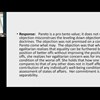adds

Labour market policies against the odds? Job finding among participants in ESF projects in comparison with the Public Employment Service
Research report 2014/1, 115 p. The European Social Fund (ESF) has complemented the Swedish Employment Service’s work assisting job seekers in finding new jobs, by financing projects specifically design

Richard Arneson: Should we reward the deserving? Some puzzles
Do plausible fundamental principles of justice incorporate the idea of rewarding the deserving? Utilitarianism is famously indifferent between a world in which saints fare badly and scoundrels fare we
Nancy Cartwright: Understanding and misunderstanding randomized controlled trials
Nancy Cartwright is Professor of Philosophy at the Department of Philosophy, University of Durham and at the University of California, San Diego ABSTRACTRCTs are valuable tools whose use is spreading i
Richard Arneson: Should we reward the deserving? Some puzzles
Richard Arneson is a political philosopher with a special interest in theories of social justice. AbstractDo plausible fundamental principles of justice incorporate the idea of rewarding the deserving?
New study deconstructs Dunbar’s number – yes, you can have more than 150 friends
An individual human can maintain stable social relationships with about 150 people. This is the proposition known as ‘Dunbar’s number’ – that the architecture of the human brain sets an upper limit on
Workshop: Global Health Impact
Every year nine millionpeople are diagnosed with tuberculosis, every day over 13,400 people areinfected with AIDs, and every thirty seconds malaria kills a child. For most ofthe world, critical medica
Managing values in climate science
Plos Climate Abstract Climate science has been deeply affected by social and political values in the last fifty years [1]. If we focus on climate denial and obfuscation, we might see the influence of va
Predicting Alcohol Misuse Among Australian 19-Year-Olds from Adolescent Drinking Trajectories
Substance Use & Misuse, doi.org/10.1080/10826084.2018.1517172. AbstractBackground: Alcohol use in adolescence predicts future alcohol misuse. However, the extent to which different patterns of adol This study investigated how adolescent trajectories of alcohol consumption during the school years predict alcohol misuse at age 19 years. Data were drawn from 707 students from Victoria, Australia, longitudinally followed for 7 years. Five alcohol use trajectories were identified based on the frequency of alcohol use from Grade 6 (age 12 years) to Grade 11 (age 17 years). At age 19 years, participants completed measures indicating Heavy Episodic Drinking (HED), dependency – Alcohol Use Disorders Identification Test (AUDIT) and social harms. At 19 years of age, 64% of participants reported HED, 42% high AUDIT scores (8+), and 23% social harms. Participants belonging to a steep escalator trajectory during adolescence had twice the odds at 19 years of age of high AUDIT scores and social harms, and three times greater odds of HED than participants whose alcohol use slowly increased. Stable moderate consumption was also associated with an increased risk of HED compared to slowly increasing use. Abstinence predicted a reduced likelihood of all forms of misuse at 19 years of age compared to slowly increased alcohol use. Trajectories of drinking frequency during adolescence predict alcohol misuse at age 19 years. Although rapid increasing use presents the greatest risk, even slowly increasing drinking predicts increased risk compared to abstinence. The findings indicate that alcohol policies should recommend nonuse and reduced frequency of use during adolescence.
More Than a Revolving Door: Corporate lobbying and the socialization of institutional carriers
Organization Studies, https://doi.org/10.1177/0170840619848014 Abstract In this paper, I study an epitomic case of institutional carriers of ideas: revolving door lobbyists. In a multi-directional interv
Air: Pollution, Climate Change and India's Choice Between Policy and Pretence
Harper Collins India’s air pollution is a deadly threat. Will its politics meet the challenge? Exposure to the world’s worst air pollution kills over a million Indians each year. It also affects childr








